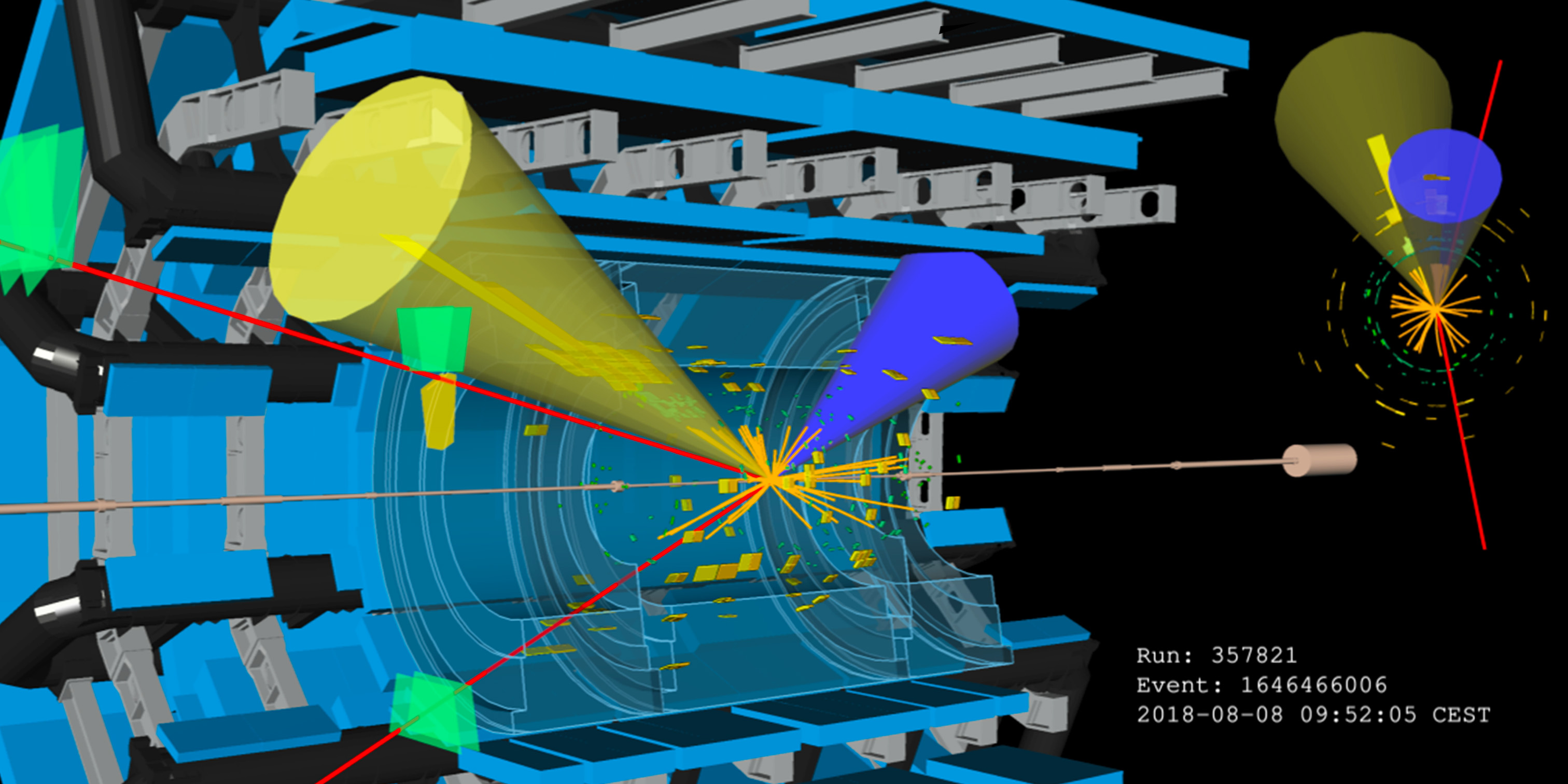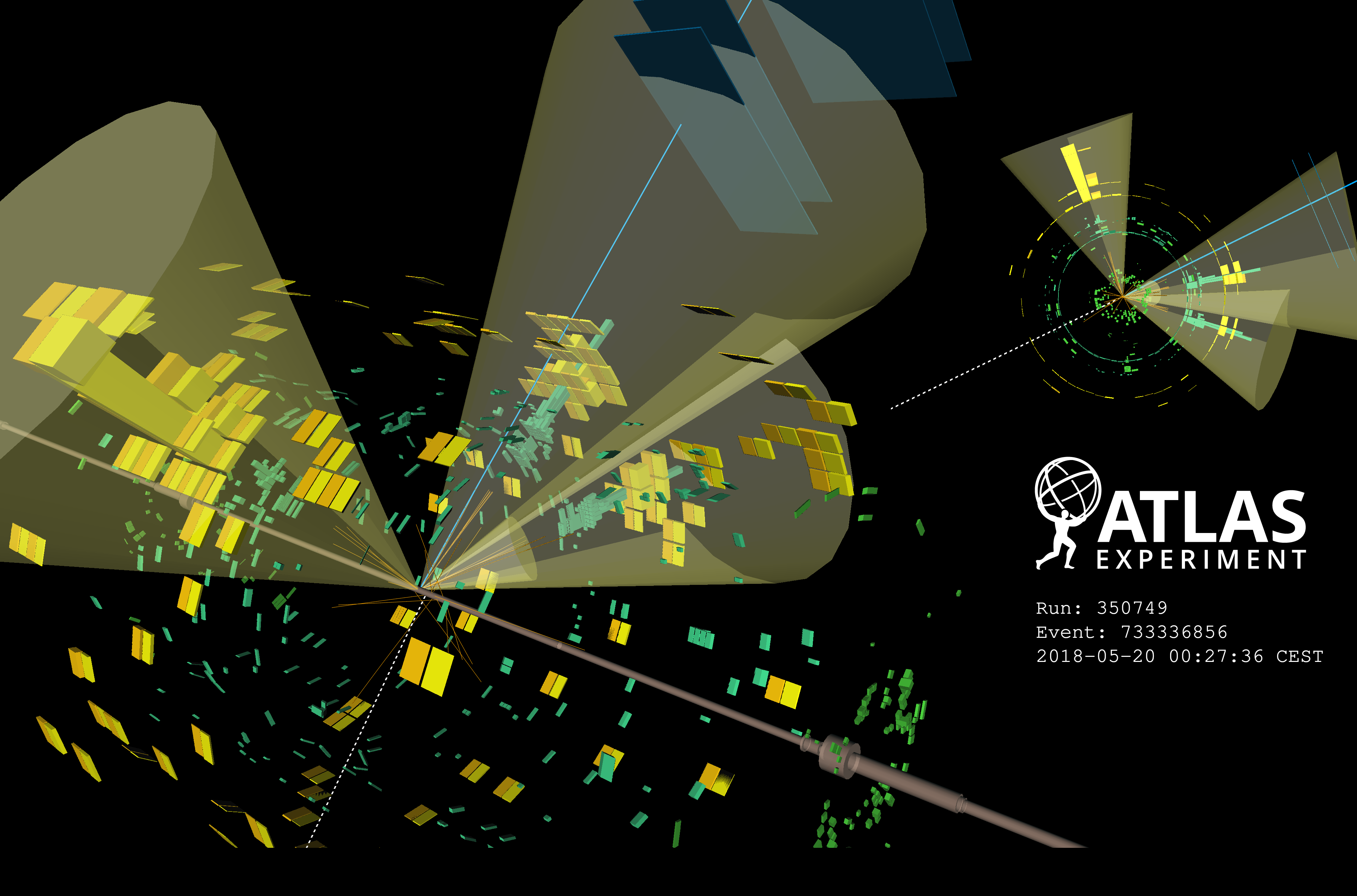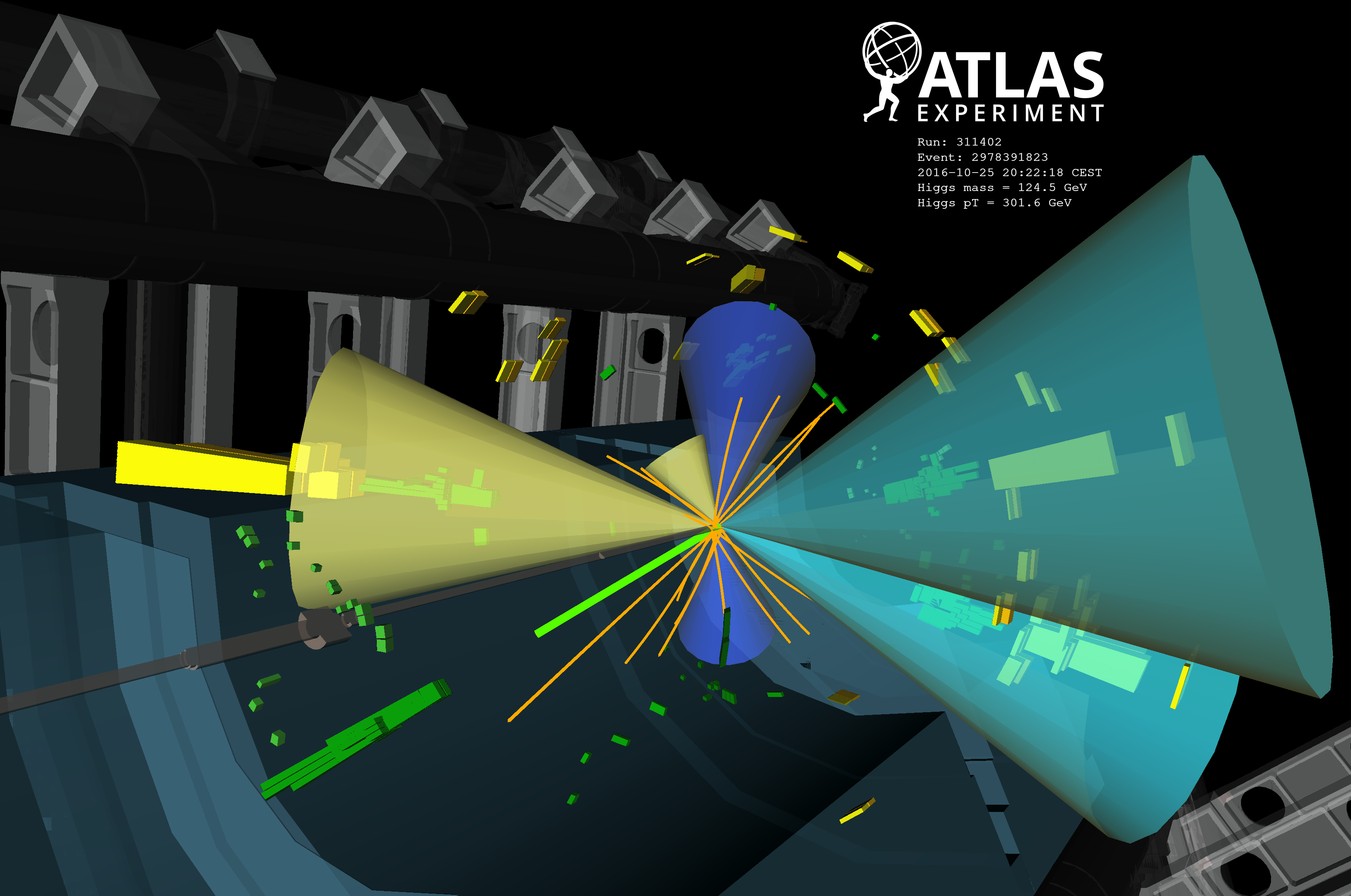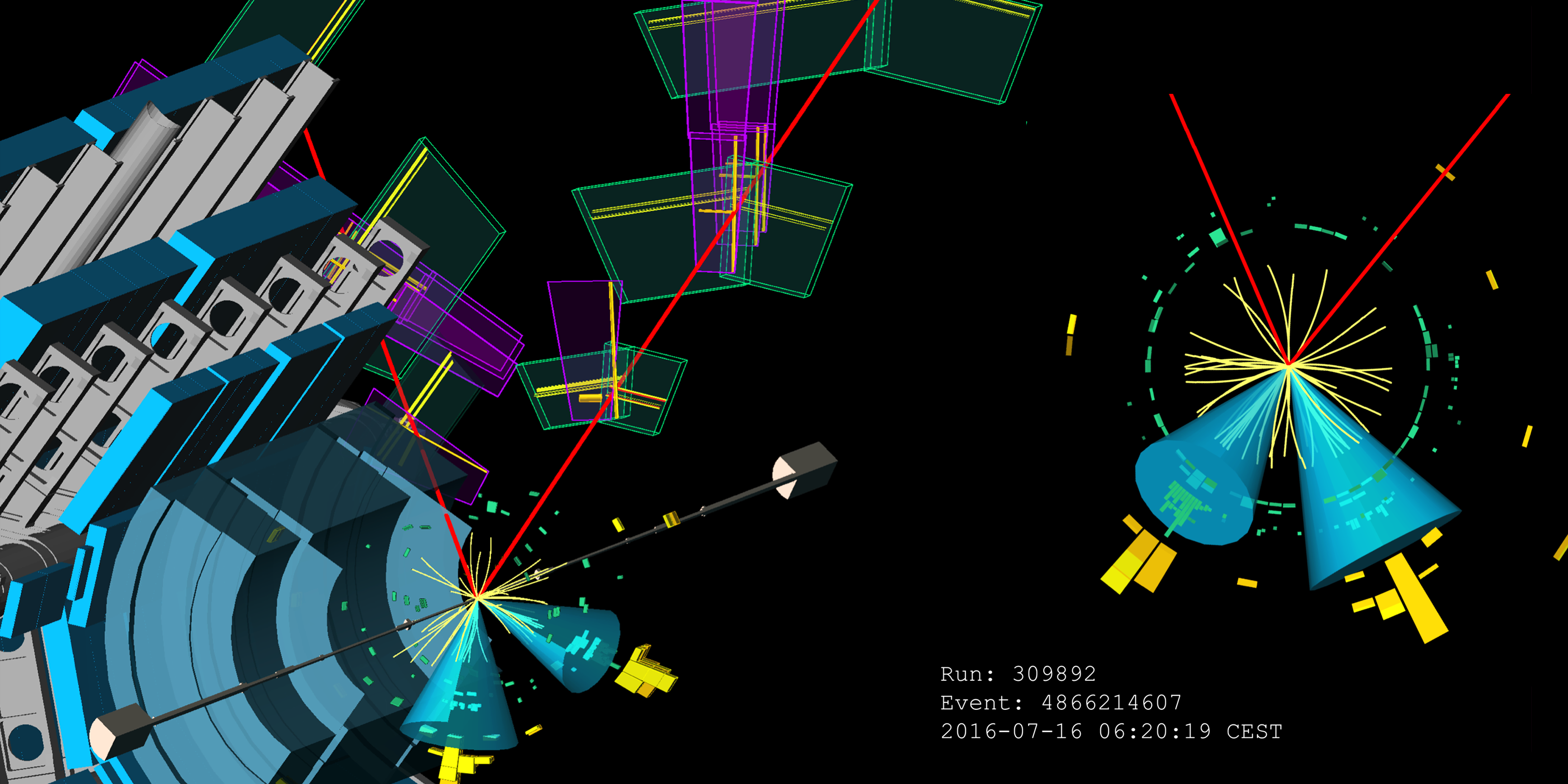Breaking “R-parity” in new searches for supersymmetry
25 July 2024 | By
Why is there more matter than antimatter in the Universe? Why do particles have such different masses? These long-standing questions could be answered by supersymmetry (SUSY), which proposes that every particle in the Standard Model has a heavier “superpartner” with different spin properties.
Yet SUSY also encompasses interactions that would cause phenomena not observed in nature, such as the decay of protons. This has traditionally been avoided by requiring the conservation of “R-parity” (or “matter-parity”), which incorporates all the quantum mechanical properties of a particle. As a result, SUSY particles cannot decay only into Standard Model particles and each decay chain includes the lightest stable SUSY particle, usually assumed to be invisible to the ATLAS experiment.
However, there might be other solutions. ATLAS physicists are also considering SUSY models with R-parity violation, which would allow the lightest SUSY particle to be observed decaying directly into Standard Model particles. These new models would forbid the violation of the baryon number or the lepton number, but not both — thus maintaining the proton’s stability. If these R-parity-violating processes exist, they would leave distinctive, fully reconstructible signatures inside the ATLAS experiment.
At the recent ICHEP 2024 conference held in Prague (Czech Republic), ATLAS physicists presented two innovative searches for R-parity-violating SUSY using data collected during the Run 2 of the LHC (2015 to 2018).

Searching for heavy stops
The first new ATLAS search targeted pair-production of supersymmetric top particles, known as stops, where each stop would decay to a b-quark and a lepton (muon or electron). The ATLAS team looked for events with two oppositely charged leptons and at least two jets (one of which must come from a b-quark). The new result expands significantly on previous studies of the Run 1 and Run 2 datasets, probing different mass ranges and refining methods to improve sensitivity. Improvements include enhanced background estimation strategies and optimizing the fit to the distribution of the mass of the leading lepton-jet pair. Figure 1 demonstrates how the result was optimized to explore various lepton decay probabilities (branching ratios).
Researchers found good agreement with Standard Model predictions. As a result, they set stringent limits on stop masses: up to 1.9 TeV for stops decaying to electrons, 1.8 TeV for muons, and 800 GeV for taus.
These pioneering analysis techniques enable the ATLAS Collaboration to explore new physics phenomena at the highest energies.
Going for gluinos
The second new search focused on the pair-production of gluinos, heavy SUSY particles produced through the strong force. Gluinos could decay into multiple quarks either directly or through an intermediate SUSY particle called a neutralino. The quark would then produce collimated jets of particles. Searches for gluinos face several challenges: the background signals from Standard Model processes are poorly modeled, signal events are expected to be extremely rare, and the high number of jets creates a complex combinatorial background.

Researchers used both traditional methods and a new machine learning (ML) approach to analyze events with many jets. Both approaches exploited the peculiarities expected for signal events, such as many high momentum jets with a uniform spread of energy. Both approaches effectively improved the sensitivity. The ML method, in particular, significantly increased the result’s discovery potential, equating to a gain that would have required almost 9 times more data (see Figure 2).
No excess events were observed. Researchers set new exclusion limits on gluino masses: up to 1800 GeV for direct decays and 2340 GeV for decays involving neutralinos (with mass up to 1250 GeV).
The road ahead
Although these searches didn't uncover new particles, they provided valuable constraints that can guide the ATLAS physics programme. Through Run 3 of the LHC and the upcoming operation of the High-Luminosity LHC, the ATLAS experiment dataset is projected to increase more than tenfold. This dataset gain will be accompanied by major detector upgrades and new analysis techniques, like those pioneered in these results. These innovations will enable the ATLAS Collaboration to explore the frontier of fundamental physics at the highest energies.
Learn more
- A search for R-parity violating supersymmetric decays of the top squark to a b-jet and a lepton in 13 TeV proton-proton collisions with the ATLAS detector (arXiv:2406.18367, see figures)
- A search for R-parity-violating supersymmetry in final states containing many jets in proton-proton collisions at 13 TeV with the ATLAS detector (JHEP 05 (2024) 003, arXiv:2401.16333, see figures)
- ICHEP2024 talk by Lauren Melissa Osojnak: Searches for supersymmetry in non-minimal models




